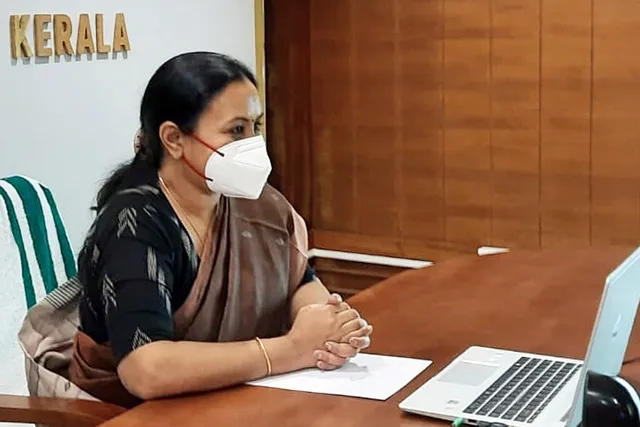- By Nidhi Giri
- Sun, 21 Jul 2024 11:30 PM (IST)
- Source:JND
Nipah Virus Outbreak: Kerala health minister Veena George on Sunday said that a total of seven samples were tested for Nipah virus and all came out negative, adding that as of now, there are 330 people on the contact list. She also mentioned that 101 out of 330 people are in the high-risk category. The statement came after the death of a 14-year-old boy from Malappuram district on Sunday, who tested positive for Nipah and was undergoing treatment in Kozhikode for the infection. The health minister said the boy from Pandikkad suffered a massive cardiac arrest at 10.50 am on Sunday, and all efforts by doctors to revive him failed.
"We tested seven samples today and all are negative. As per today's assessment, there are 330 people on the contact list. 68 of them are health workers, 101 are in the high-risk category and 7 are in IP admission. Out of this, 6 were in direct contact with the deceased child. One of them doesn't have an epidemiological link but we tested the sample since the person was showing symptoms and was from the nearby area. But that sample is also negative," Veena George said, as quoted by news agency ANI.
"The Health Department is continuing this work of testing the samples of those in the contact list. In the Paandikad panchayat (epidemiologic centre) we checked 307 houses. There are 18 fever cases. It's monsoon season so fever is common. None of these were in contact with the boy. In Aanakkayam panchayat, 310 houses were visited. 10 fever cases were reported. None of them have an epidemiological link," Veena George added.
Meanwhile, the Union health ministry has advised the Kerala government to adopt four immediate public health measures, including active case search and contact tracing in this regard.
The state government has been advised to conduct active case searches within the family of the confirmed case, the neighbourhood, and other areas with similar topography to identify any additional cases. The state should trace contacts the identified case had over the past 12 days to monitor for symptoms and prevent further spread of the virus.
Contacts of the confirmed case should be strictly quarantined, and any suspects showing symptoms should be isolated to contain the virus, according to the advisory.
Samples from potential contacts and suspects should be collected and transported for laboratory testing to ensure early detection and response.
To support the state government in managing the outbreak, a multi-member joint outbreak response team from the National ‘One Health Mission’ of the Union health ministry will be deployed. This team will assist in investigating the case, identifying epidemiological linkages, and providing technical assistance.
The ministry said that the Indian Council of Medical Research (ICMR) had sent monoclonal antibodies for patient management at the state's request. A mobile Biosafety Level-3 (BSL-3) laboratory for testing additional samples from contacts also arrived in Kozhikode. However, the monoclonal antibodies could not be administered to the boy “due to his poor general condition.”
READ MORE: Kanwar Yatra 2024: SC To Hear Plea Against UP Govt’s 'Nameplate' Order For Shop Owners On July 22
What Is Nipah Virus?
The Nipah virus infection is a zoonotic illness transferred from animals such as fruit bats and pigs to people. Nipah usually spreads to humans from animals or through contaminated food, but it can also be transmitted directly between people.
The symptoms of Nipah virus include fever, vomiting, and respiratory infection and serious infection may cause brain inflammation, resulting in coma. Till now, there is no vaccine to cure this virus. In the wake of the virus, the state health department has established 30 isolation rooms and a six-bed ICU at the Manjeri Medical College. It has isolated all those who had come into contact with the 14-year-old boy.
Nipah fatality rate is estimated around 40-75 per cent. However, this rate can vary by outbreak, depending on local capabilities for epidemiological surveillance and clinical management.
(With Agency Inputs)

